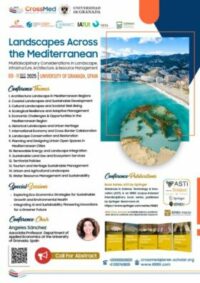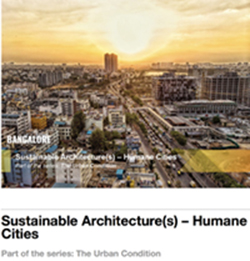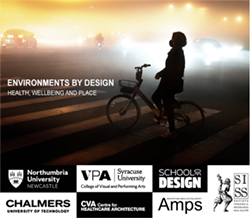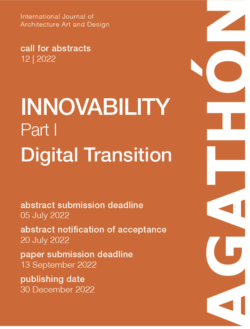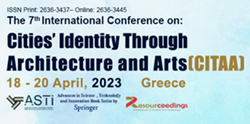ISSN (online): 2076-3298
Call of the Journal:
- Dynamic of Vegetation and Climate Change
- Environmental Implications of COVID-19 Pandemic
- Environmental Sustainability – Life Cycle Assessment – Energy and Environmental Technology
- Groundwater Quality and Groundwater Vulnerability Assessment
- Indoor and Outdoor Air Particulate Matter
- Monitoring and Assessment of Environmental Quality in Coastal Ecosystems
- Monitoring and Management of Inland Waters
- Multiple Approaches for Environmental Assessment of Transitional and Coastal Waters
- Plastic Contamination | Challenges and Solutions
- Response to Current Air Quality Changes in Small and Large Areas
- Restorative Agriculture
- Risk Assessment for Workplace Exposure to Natural Radioactivity
- Rural-Urban Relations and Sustainable Food Systems
- Soil Pollution Assessment and Sustainable Remediation Strategies
Jan
2021
Particulate matter (PM) is an air pollutant of great and increasing concern to human health. Particle properties depend not only on their originating sources, but also on the dynamic physico-chemical processes that follow their formation. Personal exposure to PM depends on the lifestyle of each individual and the different microenvironments frequented. A holistic and accurate characterization of both outdoor and indoor PM is essential to better assess total personal exposure to PM, as well as the consequent health effects. Such knowledge is crucial for the proper development of effective mitigation strategies. This Special Issue intends to compile high quality research on PM characterization in indoor and outdoor microenvironments, to support the assessment of integrated personal exposure. Indoor particulate pollution is highly site-specific, since some sources are uniquely building-related. Thus, studies with site-specific measurements (e.g., residence, workplace, and public building) are welcome. Detailed characterization of short-term pollution events such as specific indoor activity (e.g. cooking, cleaning, smoking, and dust resuspension) will be valued. Concerning outdoor PM, strong consideration will be given to studies discussing urban and suburban measurements, at a wide variety of sites (e.g. roadside, background and green spaces). Although commuting accounts for a short period of a person’s daily time, its contribution to the total exposure to PM may be disproportionally high. Thus, research studies in transport modes also deserve attention in this Special Issue. Investigation of indoor-to-outdoor PM relationships will be highly valuable. Finally, a particular focus will be given for studies that establish actions towards an effective reduction of PM levels, by identifying and encouraging the application of practical mitigation strategies. This Special Issue invites research in the areas of particulate air pollution, with topics of interest including, but not limited to, those indicated in the keywords.
Keywords: particulate matter pollution; air monitoring; exposure assessment; particle chemical composition; particle size distribution; dosimetry; health risk assessment; source apportionment; air pollution mitigation strategies.
Indoor and Outdoor Air Particulate Matter
Particulate matter (PM) is an air pollutant of great and increasing concern to human health. Particle properties depend not only on their originating sources, but also on the dynamic physico-chemical processes that follow their formation. Personal exposure to PM depends on the lifestyle of each individual and the different microenvironments frequented. A holistic and accurate characterization of both outdoor and indoor PM is essential to better assess total personal exposure to PM, as well as the consequent health effects. Such knowledge is crucial for the proper development of effective mitigation strategies. This Special Issue intends to compile high quality research on PM characterization in indoor and outdoor microenvironments, to support the assessment of integrated personal exposure. Indoor particulate pollution is highly site-specific, since some sources are uniquely building-related. Thus, studies with site-specific measurements (e.g., residence, workplace, and public building) are welcome. Detailed characterization of short-term pollution events such as specific indoor activity (e.g. cooking, cleaning, smoking, and dust resuspension) will be valued. Concerning outdoor PM, strong consideration will be given to studies discussing urban and suburban measurements, at a wide variety of sites (e.g. roadside, background and green spaces). Although commuting accounts for a short period of a person’s daily time, its contribution to the total exposure to PM may be disproportionally high. Thus, research studies in transport modes also deserve attention in this Special Issue. Investigation of indoor-to-outdoor PM relationships will be highly valuable. Finally, a particular focus will be given for studies that establish actions towards an effective reduction of PM levels, by identifying and encouraging the application of practical mitigation strategies. This Special Issue invites research in the areas of particulate air pollution, with topics of interest including, but not limited to, those indicated in the keywords.
Keywords: particulate matter pollution; air monitoring; exposure assessment; particle chemical composition; particle size distribution; dosimetry; health risk assessment; source apportionment; air pollution mitigation strategies.
AGRICOLA (National Agricultural Library), AGRIS Agricultural Sciences and Technology (FAO), DOAJ, Emerging Sources Citation Index – Web of Science (Clarivate Analytics), Genamics JournalSeek, GeoRef (American Geosciences Institute),Norwegian Register for Scientific Journals, Series and Publishers (NSD), Scopus (Elsevier) Web of Science (Clarivate Analytics), CLOCKSS (Digital Archive), e-Helvetica (Swiss National Library Digital Archive), Academic OneFile (Gale/Cengage Learning), Google Scholar J-Gate (Informatics India), ProQuest Central (ProQuest), Science In Context (Gale/Cengage Learning), WorldCat (OCLC).
Info at: www.mdpi.com/journal/environments/apc
Guest Editor
Dr. Vânia Martins



